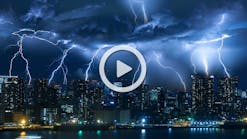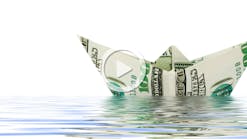After Hurricane Katrina in 2005, we ran an article covering the aftereffects–the damage to stormwater infrastructure, the cleanup efforts, and the lessons learned. Two articles in this issue, one by Carol Brzozowski and one by JoAnne Castagna of the US Army Corps of Engineers about the Corps’ efforts in the days and weeks after the storm, cover much of the same ground for Hurricane Sandy. But there is one important difference in our coverage–and others’–this time, something that wasn’t as much discussed eight years ago. The focus now is not only on the effects of a single storm but also on the future implications, and on what we need to do if sea level rise and other changes continue to alter our concept of how the world, and the weather, work.
Stormwater managers and urban planners for several years have been focusing on the new definition of terms like “100-year storm event,” which, as many are noting, is occurring with disturbing frequency in many areas. As changes are occurring, is our infrastructure adequate to deal with them? Do our conveyance systems have the capacity to deal with larger or more frequent storms? Are our coastal areas protected? In many cases, the answer is no. Planners in some coastal cities have put together detailed plans for how they might manage; others are still struggling to do so.
The National Oceanic and Atmospheric Administration now has an online tool called Digital Coast (available at www.csc.noaa.gov/digitalcoast ), which allows users to model the effects in their own part of the world based on several different assumptions, such as amount of sea level rise and confidence levels. The tool includes a Marsh component that shows, under various user-specified conditions, how and where marshes and wetlands may expand; a Social Vulnerability Index showing heavily populated or built-out areas that could be particularly hard-hit; and a Flood Frequency component showing low-lying areas–because, as NOAA puts it, “today’s flood will become tomorrow’s high tide.” Although the Digital Coast doesn’t yet include all coastal areas in the US, more are being added, and it’s worth exploring just to see the capabilities that are available.
A demonstration of this tool, along with presentations by those in coastal communities that are far advanced in their modeling and resiliency-planning efforts, will take place at the Coastal Protection Symposium in Myrtle Beach, SC, in August–part of the annual StormCon conference. You can find more information at www.StormCon.com.
Janice Kaspersen
Janice Kaspersen is the former editor of Erosion Control and Stormwater magazines.





